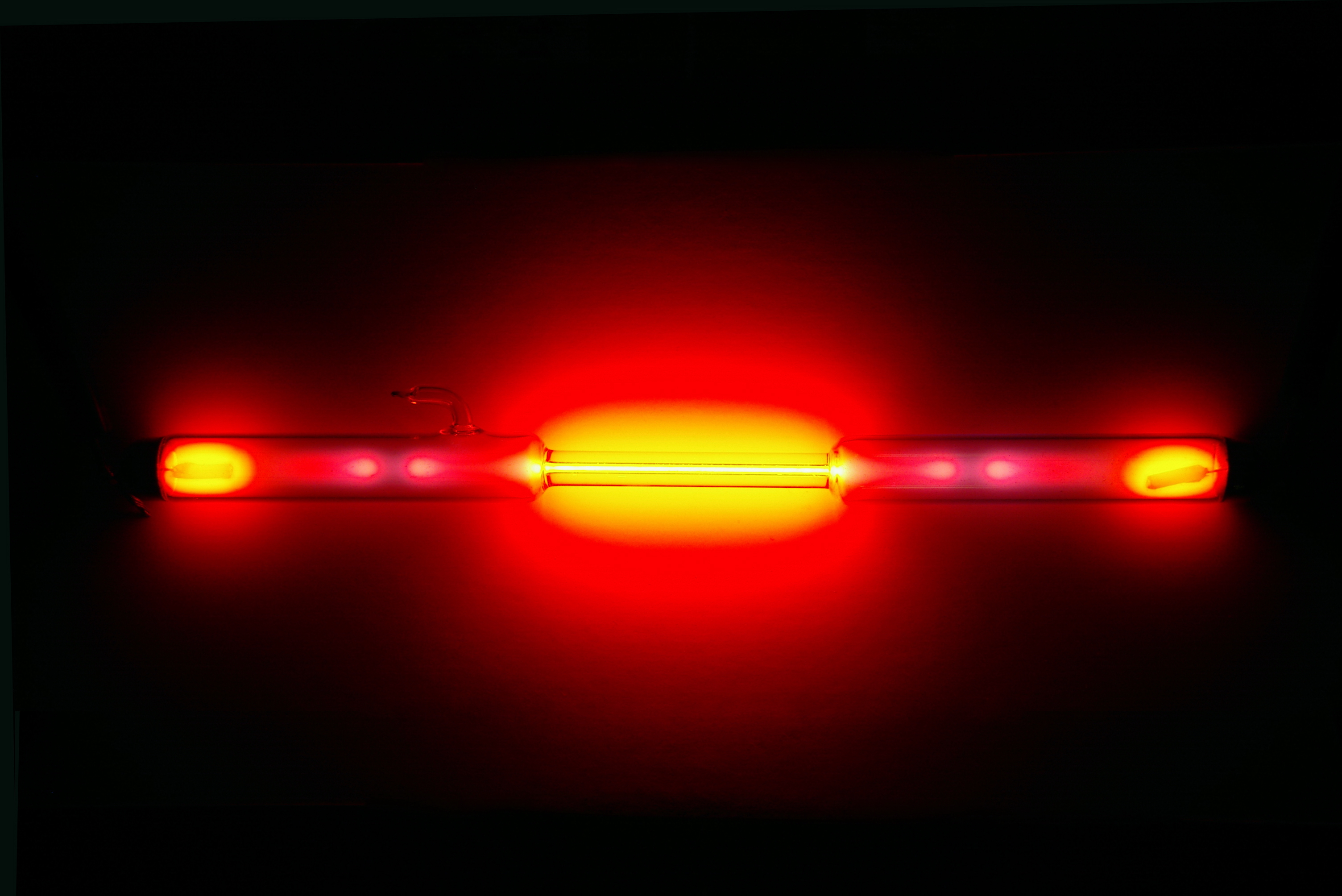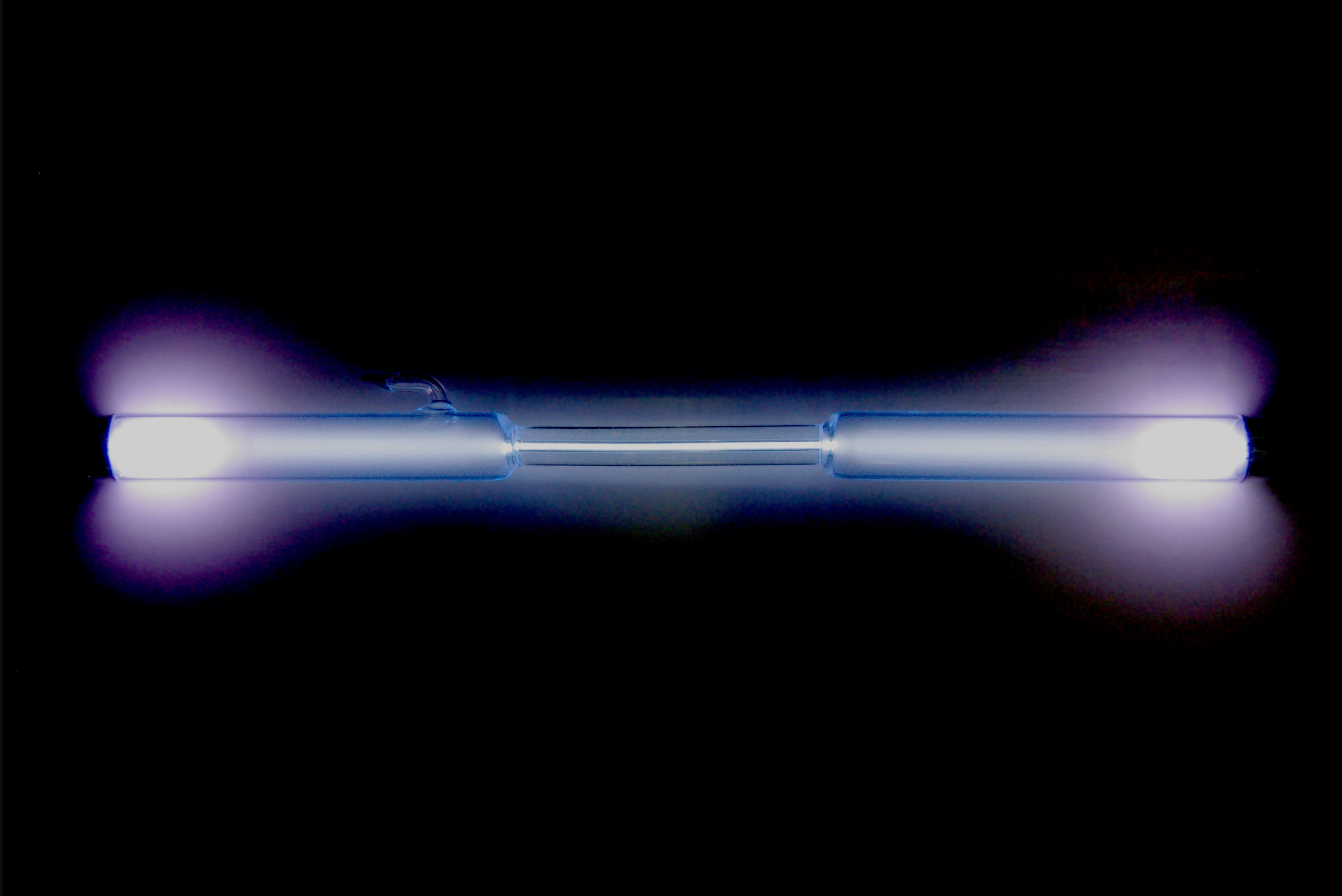Electric discharge lighting
Enlarge text Shrink textGas-discharge lamps are a family of artificial light sources that generate light by sending an electric discharge through an ionized gas, a plasma. Typically, such lamps use a noble gas (argon, neon, krypton, and xenon) or a mixture of these gases. Some include additional substances, such as mercury, sodium, and metal halides, which are vaporized during start-up to become part of the gas mixture. Single-ended self-starting lamps are insulated with a mica disc and contained in a borosilicate glass gas discharge tube (arc tube) and a metal cap. They include the sodium-vapor lamp that is the gas-discharge lamp in street lighting. In operation, some of the electrons are forced to leave the atoms of the gas near the anode by the electric field applied between the two electrodes, leaving these atoms positively ionized. The free electrons thus released flow to the anode, while the cations thus formed are accelerated by the electric field and flow towards the cathode. The ions typically cover only a very short distance before colliding with neutral gas atoms, which give the ions their electrons. The atoms which lost an electron during the collisions ionize and speed toward the cathode while the ions which gained an electron during the collisions return to a lower energy state, releasing energy in the form of photons. Light of a characteristic frequency is thus emitted. In this way, electrons are relayed through the gas from the cathode to the anode. The color of the light produced depends on the emission spectra of the atoms making up the gas, as well as the pressure of the gas, current density, and other variables. Gas discharge lamps can produce a wide range of colors. Some lamps produce ultraviolet radiation which is converted to visible light by a fluorescent coating on the inside of the lamp's glass surface. The fluorescent lamp is perhaps the best known gas-discharge lamp. Compared to incandescent lamps, gas-discharge lamps offer higher efficiency, but are more complicated to manufacture and most exhibit negative resistance, causing the resistance in the plasma to decrease as the current flow increases. Therefore, they usually require auxiliary electronic equipment such as ballasts to control current flow through the gas, preventing current runaway (arc flash). Some gas-discharge lamps also have a perceivable start-up time to achieve their full light output. Still, owing to their greater efficiency, gas-discharge lamps were preferred over incandescent lights in many lighting applications, until recent improvements in LED lamp technology.
Read more on Wikipedia >
 Topic
Topic

























